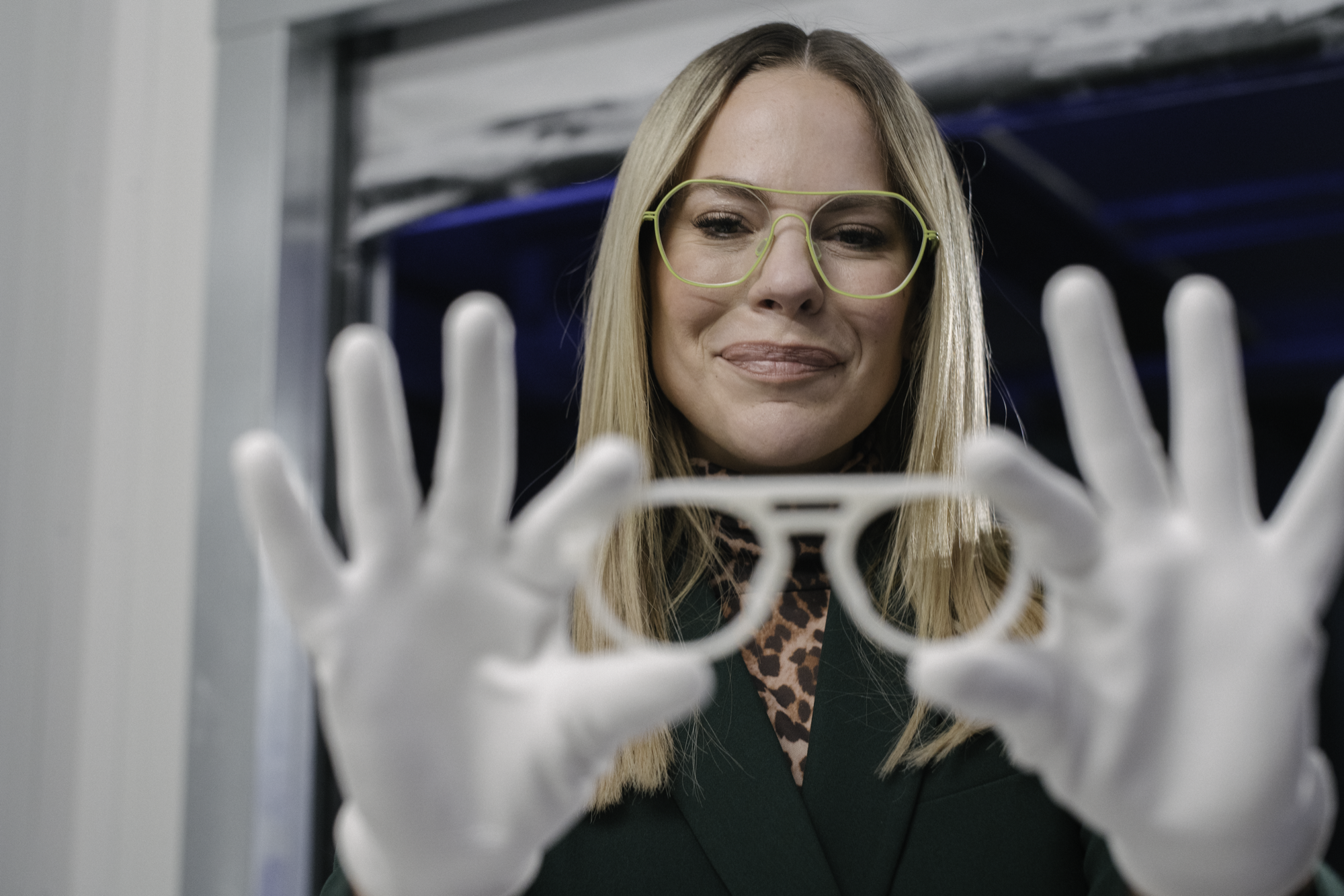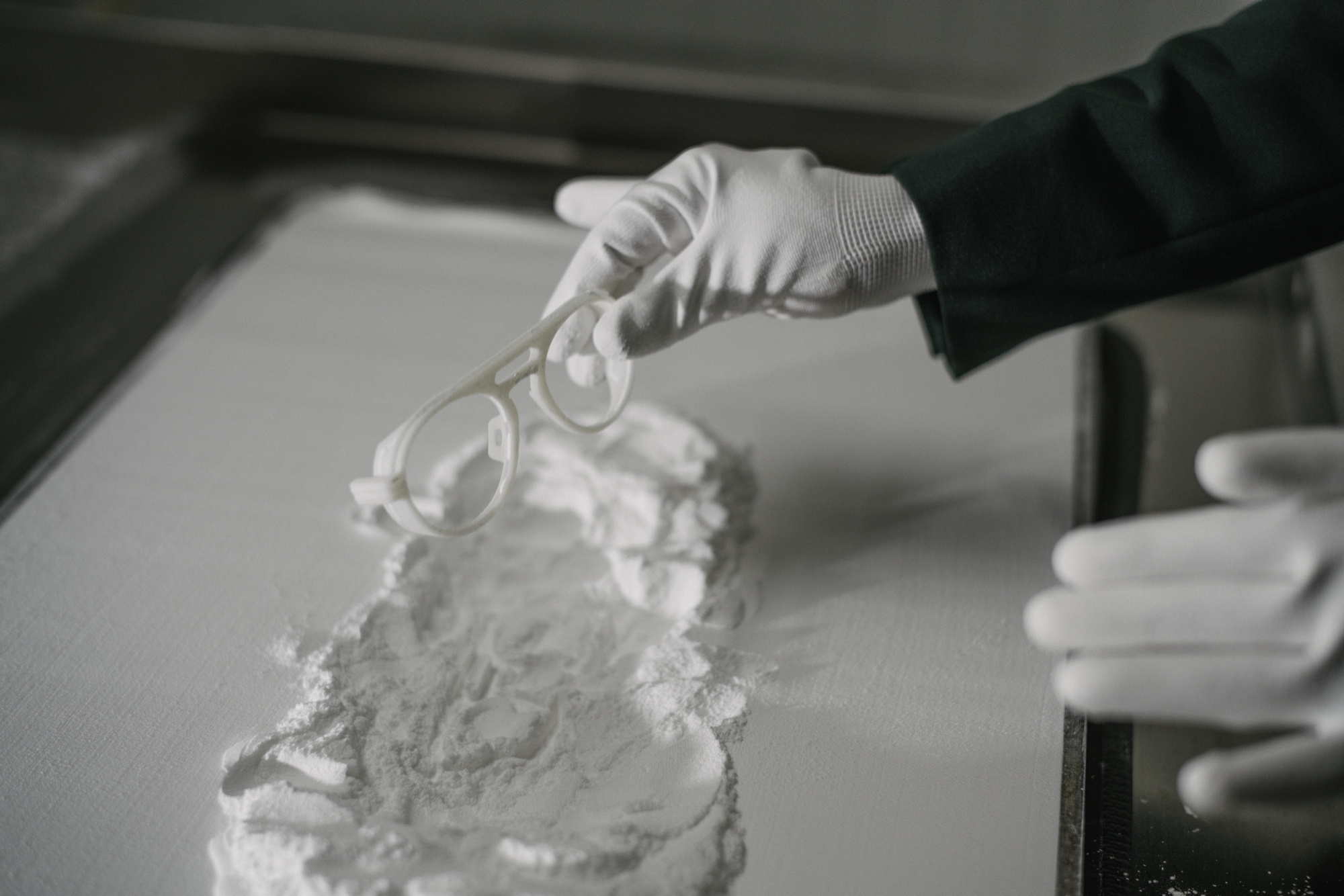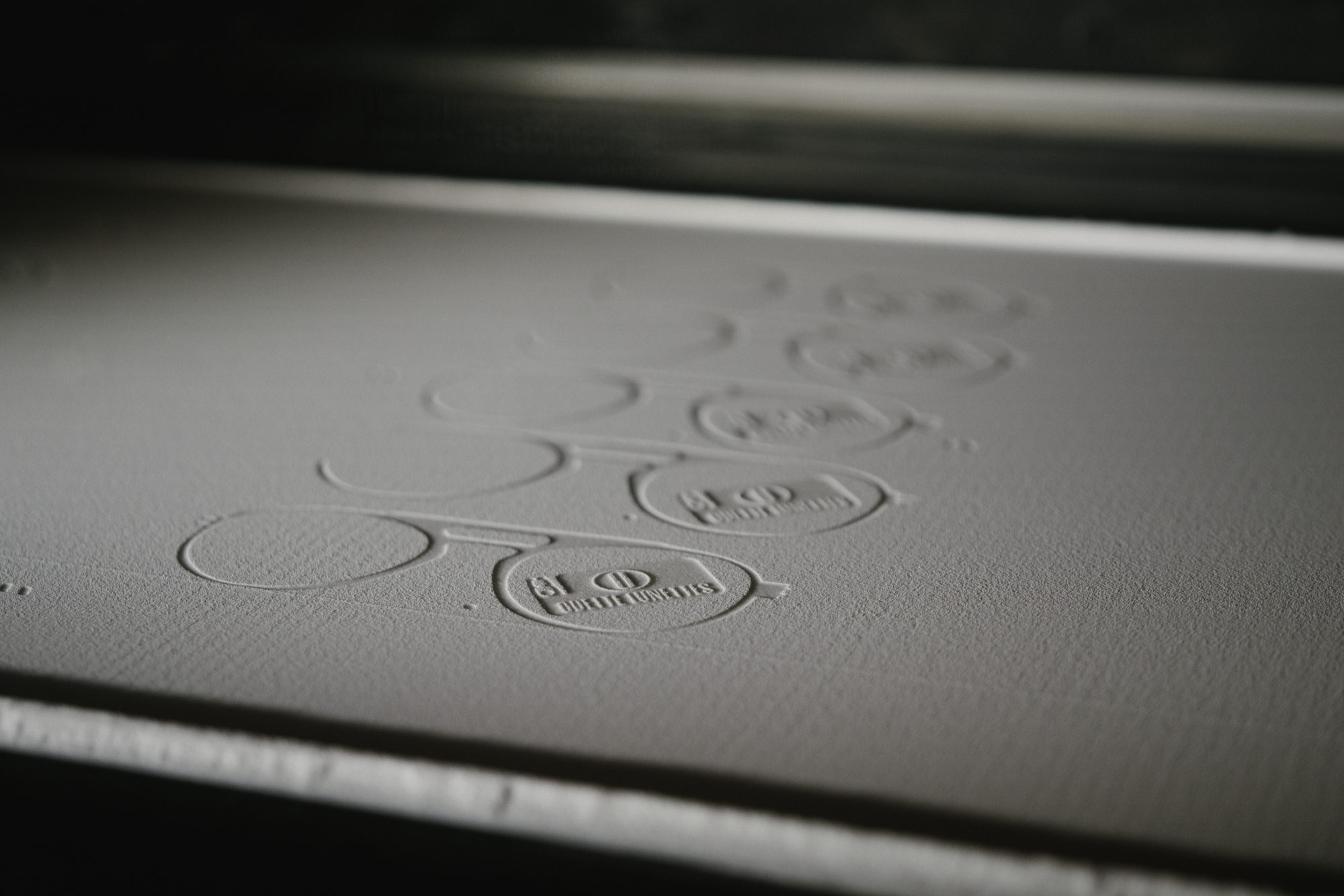Belgian software and 3D printing service provider Materialise has expanded its material portfolio to include Forward AM’s bio-based Ultrasint PA11 made from sustainably farmed castor beans.
Offering properties particularly suited to the eyewear sector, the material will be used to create a brand new collection of 3D printed eyewear by Odette Lunettes, a leading Belgian eyewear brand. By combining 3D printing with PA11, the two companies are seeking to improve the sustainability of the eyewear sector through the use of more eco-friendly materials and addressing issues of overproduction within the fashion industry.
“Eyewear doesn’t just need to look good, it needs to be produced in a way that reflects the brand and the consumer’s sustainability mindfulness,” said Alireza Parandian, Business Development Director at Materialise. “With 3D printing, the waste-minimizing nature of the additive process already offers clear environmental and economic benefits.
“Using a material like PA11 has the potential to magnify these advantages.”

Materialize in the eyewear sector
Materialise has been active in the eyewear sector for a number of years, having worked with several different brands on new collections where 3D printing has played a key role.
The firm has previously worked with Japanese firm Hoya to create 3D printed frames for its Yuniku brand, and with Italian glasses manufacturer Safilo to 3D print complex frame designs for its OXYDO Capsule collection.
In 2020, Materialise invested in eyewear service provider Ditto to provide customizable 3D printed frames through the latter’s online eyewear try-on service. The move formed the next step in Materialise’s aim to create an end-to-end digital additive manufacturing platform for the eyewear sector.
Now, the firm is looking to address issues surrounding sustainability and overproduction within the eyewear sector with the addition of Ultrasint PA11 to its materials portfolio.

Addressing sustainability in fashion
Overproduction is one of the fashion industry’s biggest environmental challenges, with the sector accounting for a fifth of the 300 million tons of plastic produced globally each year. Through its latest partnership with Odette Lunettes, Materialise is looking to tackle this issue within the eyewear vertical via its 3D printing services and newly added Ultrasint PA11 material.
The two firms have teamed up to create a new collection of 3D printed eyewear, leveraging Materialise’s 3D printing expertise, Odette Lunettes’ creative design, and the sporting background of former cycling world champion Tom Boonen.
“3D printing is ideal to create a technical sports frame without compromising on the design we had in mind,” said Eline De Munck, Co-founder of Odette Lunettes. “On top of that you can personalize the design. With our ‘Odette Lunettes X Tom Boonen’ collection, consumers can choose the color and size of their frame.”
The collection will offer a unisex glasses frame available in two sizes and three colors, with 3D printing providing customers with the opportunity to customize the size and color-way of their frames. With the eyewear sector experiencing around 20-30 percent of unsold stock due to overproduction, 3D printing enables the frames to be produced in small product series on-demand and cost-effectively.

To improve the sustainability of the frames further, they will be 3D printed in Ultrasint PA11, which is responsibly sourced from castor beans and based on Arkema’s Rilsan PA11. Additionally, traditional subtractive manufacturing techniques commonly used for eyewear production can see up to 70 percent of the acetate used in frames being disposed of. Additive manufacturing, however, allows the frames to be built to spec without any material loss.
The technology’s growing popularity in the eyewear sector is also due to its ability to deliver freedom of design, enabling shapes, structures, and fits that are physically or financially unachievable with conventional manufacturing technologies. Personalization is a growing trend in eyewear, and the ability to digitally fine-tune designs quickly and accurately without the expenses associated with new iterations allows manufacturers to significantly reduce lead times.
“With its speed, flexibility and digital-first DNA, 3D printing provides radical competitive advantages for eyewear brands,” said Parandian. “It empowers start-ups, supports new business opportunities and allows companies of all sizes to create new designs, test market appetite, and scale-up production with minimum risk.
“By generating less waste and consuming minimum energy across the supply chain, 3D printing also offers greener credentials, something that increasingly influences today’s consumer choice.”
Subscribe to the 3D Printing Industry newsletter for the latest news in additive manufacturing. You can also stay connected by following us on Twitter and liking us on Facebook.
Looking for a career in additive manufacturing? Visit 3D Printing Jobs for a selection of roles in the industry.
Subscribe to our YouTube channel for the latest 3D printing video shorts, reviews, and webinar replays.
Featured image shows Materialise and Odette Lunettes have partnered to launch the Odette Lunettes X Tom Boonen eyewear collection. Photo via Materialise.


